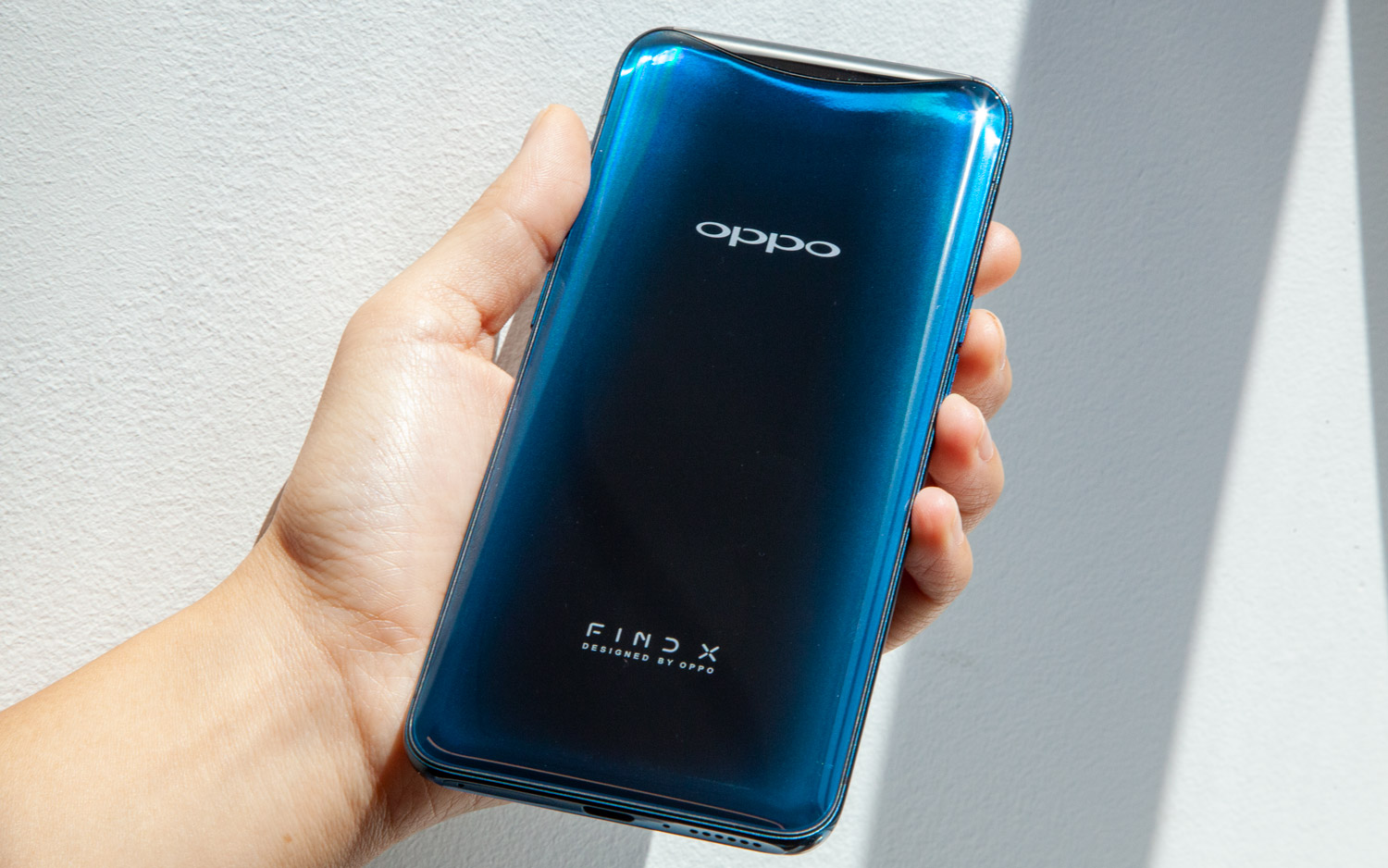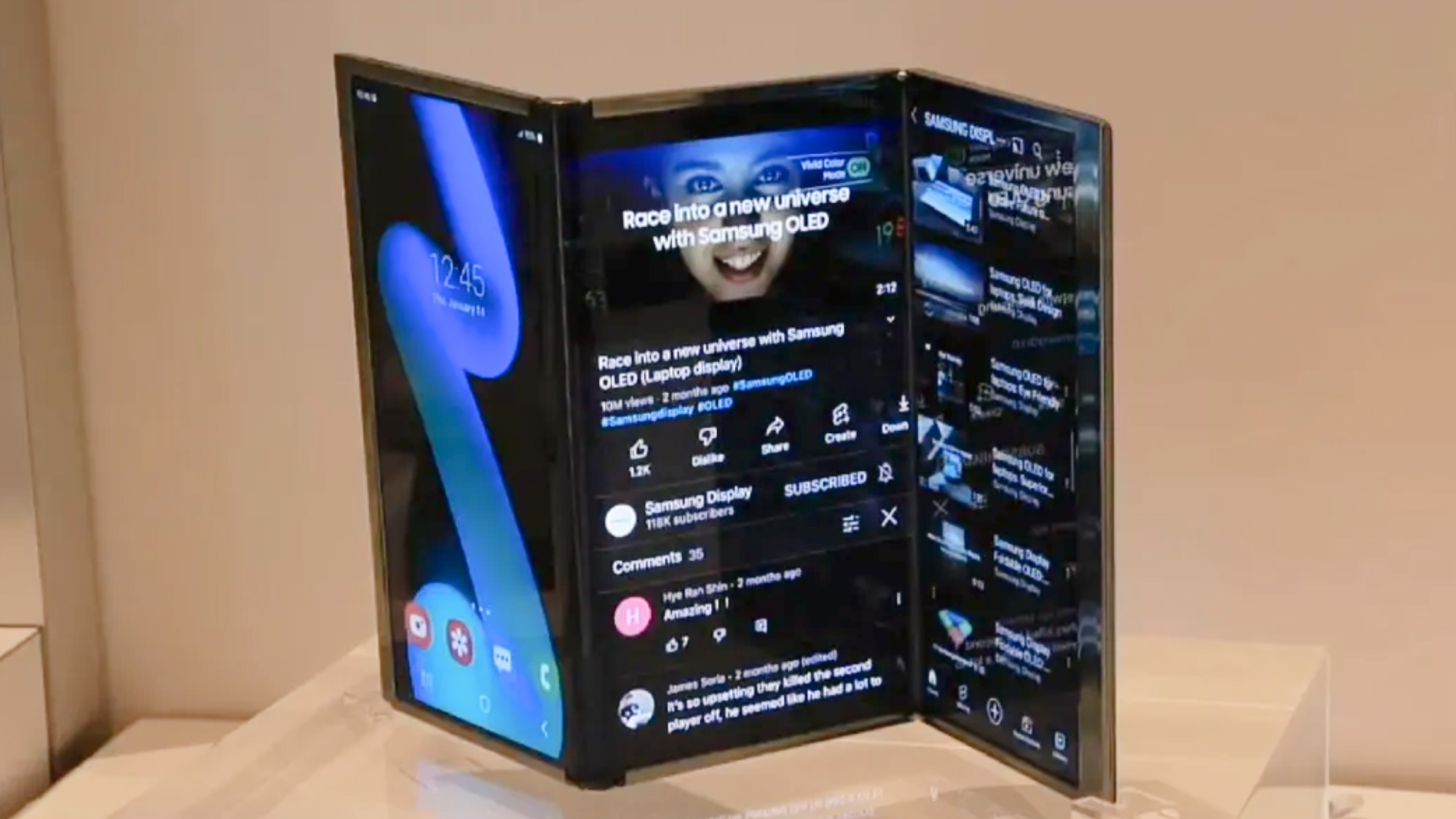The First Phone with 10GB of RAM Outspecs MacBook Pro
A new leak suggests the Oppo Find X will be the first phone on the planet to break the 8GB RAM barrier.
Well, this is it, folks — a smartphone is allegedly about to break the 8GB RAM barrier for the first time ever, establishing a new 10GB limit.

According to this post in the Chinese social network Weibo, the Chuck Yeager of phones is the Oppo Find X, a slice of the future that just got more stunning than ever. This phone has arguably better specs than a top-of-the-line $1,799 MacBook Pro.
Yes, yes, you are right: A smartphone is not the same as a computer. Even while more and more people do their work on phones, and even while almost everyone spends more time in their phones than in computers, it is not. BUT! The feat is still impressive and here’s the proof. You’ll be the judge.
MORE: iPhone Xs and Xs Max Benchmarked: World's Fastest Phones (Again)
The Oppo Find X is powered by a Qualcomm Snapdragon 845 system-on-a-chip. A 64-bit 8-core 8-threads unit that runs at 2.8GHz with 2MB level 3 cache, made with 10 nanometer technology. This is Qualcomm’s latest and greatest.
The MacBook Pro 13 packs a Intel Core i5 processor that runs at 2.3-GHz. It’s a great processor, much faster than the 845 with double the Geekbench 4 score (8,886 vs 16,407) but for most everyday tasks, the Qualcomm will be comparable to the i5 — while running for a day in a battery charge. Good luck doing that with the i5.
And the Find X supports quick charging, replenishing 50 percent of a battery in only 15 minutes.
Get instant access to breaking news, the hottest reviews, great deals and helpful tips.

The Qualcomm also does a lot more things than the more generic i5, of course. Because it needs to. It has a dedicated Spectra 280 ISP, which captures 16-megapixel photos at 60 images per second. And it has an Hexagon 685 DSP, Artificial Intelligence processing engines that the Intel simply doesn’t have.
The Oppo Find X 6.4-inch display resolution is 2,340 x 1,080 pixels. It’s also an AMOLED display, which looks quite better than the LCD on the MacBook, thanks to a richer color gamut and a higher pixel density. You get a Retina-destroying, ultra-sharp 401 pixels per inch display density on the Find X compared to the 227ppi of the MacBook, which has a bigger pixel count: 2,560 x 1,600 pixels in a 13-inch display.
MORE: The OnePlus 6T Looks Like the Phone of the Year
To power those screens, both devices use integrated graphics: the Adreno 630 vs the Intel Iris Plus Graphics 655. According to Notebookcheck, the average graphic benchmarks puts the Qualcomm Adreno 630 built in the Oppo FindX Snapdragon 845 at 98 percent of the speed of the Iris Plus Graphics 655 in the MacBook Pro 13.
Even while you will not be able to play all the same games and use the same apps, this is quite impressive. Especially when you take into account that both chips use the main device RAM for operation. That means that the Adreno will have more two more gigabytes of RAM to play with than the MacBook’s built-in Intel graphics.
And that’s the impressive thing here: a phone with 10GB of RAM vs the 8GB of the $1,799 MacBook Pro. While you can argue that 10GB is overkill for a phone, I would say that, with the current power hungry games and increased multitasking we expect out of our phones now, this is going to be the new normal. The iPhone XS has just 4GB of RAM, according to a recent teardown.
Both the Find X and MacBook Pro, by the way, have 256GB solid state storage.
I find it pretty amazing that in 2018 we such power in our hands that competes head-to-head with full computers. This was unimaginable just two years ago.
Jesus Diaz founded the new Sploid for Gawker Media after seven years working at Gizmodo, where he helmed the lost-in-a-bar iPhone 4 story and wrote old angry man rants, among other things. He's a creative director, screenwriter, and producer at The Magic Sauce, and currently writes for Fast Company and Tom's Guide.
-
vperezmunoz1 So many comparison based on nothing... Memory on mac, both ram and ssd are miles ahead of the ones in the phone. Processor is even further. If you do anything else than word you will wish you had the i5. 13 inch screens are much harder to do than 6 inch ones, just because of size. Just another article written without doing research first.Reply

